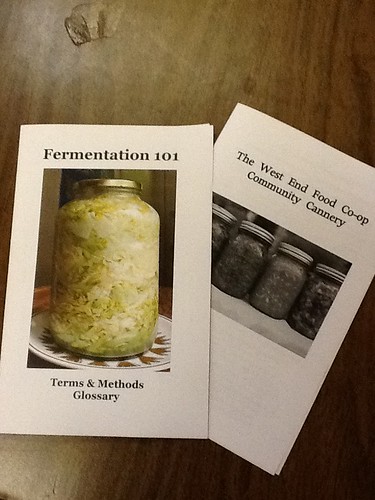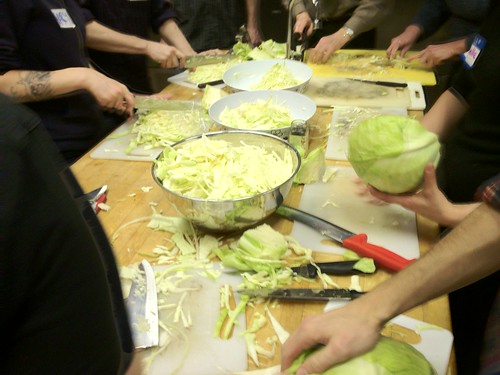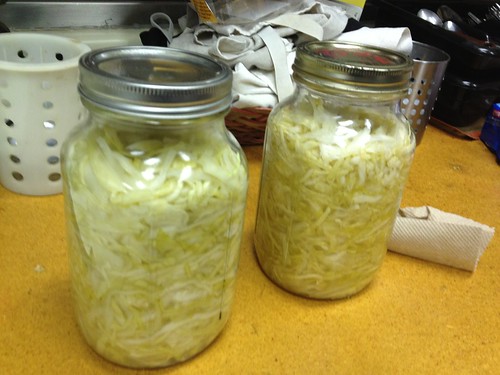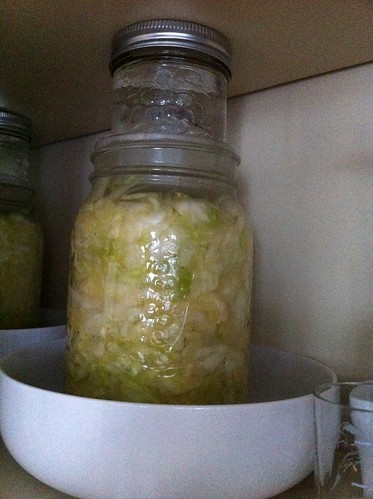West End Food Co-op: Fermentation 101 – Sauerkraut
Last week we went to the West End Food Co-op’s Fermentation 101 workshop and made Sauerkraut with nice big green heads of local Ontario cabbage. The class was taught by James Partanen and I think JC and I took a lot away from it.
So how do you make sauerkraut? (the simplest version)
Ingredients:
Cabbage
Pickling Salt (or any salt that doesn’t have additives)
Appropriately Sized Jars
Step One: Chop up some cabbage as thinly as possible and stick it in a bowl.
Step Two: Sprinkle the cabbage with salt, and bruise it and squish it, and massage it.
Step Three: Leave the cabbage to sweat in the salt for an hour.
Step Four: Once it’s wilted, start stuffing a jar with it, and make sure you pound the cabbage several times while filling the jar.
Step Five: Add any sweated liquid to the top of the jar, and put something inside the jar to hold the cabbage down (A smaller jar works perfectly for this). You should have enough liquid, if you don’t, make some brine.
Step Six: Place in a non-drafty space with a temperature between 17 and 22 °C for ten to 21 days.
Step Seven: Profit. Okay, just kidding. After a week, taste the kraut regularly. It might be up to your krauty standards, only you can know for sure.
Step Eight: Once it’s where you want it to be, put a lid on the jar and stick it in the fridge. Then eat often. And start the Sauerkraut process again.
My mom and I used to make sauerkraut when I was little. Which actually means, I helped chop up cabbage and she did everything else. We had a heavy stone pot, that we would fill with cabbage, salt and of course dill. It would be pressed down with a stone or a plate, and sometimes covered with cheesecloth. It would always be delicious. Always.
I’m hopeful that this sauerkraut experience will also be a positive one. We took home one jar with juniper berries, and one jar with out (mine). I can’t wait to try them both! It’s interesting to me how dramatic the colour change was, even after just a few days.
We received a few links from James after the workshop so I think they are worth sharing here too:
- How to make naturally fermented sauerkraut
- More information on Fermentation from the National Centre for Home Food Preservation.
- Pickling Vegetables from Oregon State University (PDF)
Have you ever pickled or fermented anything?




